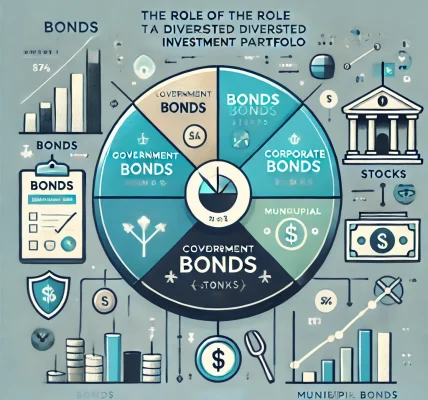Introduction
Investing is a great way to build wealth, but hidden fees can eat into your returns without you even realizing it. Many investment platforms advertise low or no commission trades, but they often include hidden charges that investors may overlook. Understanding these fees is crucial for making informed decisions and maximizing your profits.
In this guide, we will break down the most common hidden fees in investment platforms, how they affect your portfolio, and what you can do to minimize their impact.
1. Common Hidden Fees in Investment Platforms
While investment platforms may seem transparent, they often charge various fees that are not always clearly disclosed. Here are some of the most common ones:
1.1. Expense Ratios on Mutual Funds and ETFs
Expense ratios represent the annual cost of managing a mutual fund or an exchange-traded fund (ETF). While some investment platforms offer commission-free ETF trading, they still charge an expense ratio, which can range from 0.03% to over 1%.
✅ How to Avoid: Opt for low-cost index funds or ETFs with lower expense ratios to reduce long-term costs.
1.2. Account Maintenance Fees
Some investment platforms charge monthly or annual account maintenance fees, especially for retirement accounts like IRAs. These fees typically range from $25 to $100 per year.
✅ How to Avoid: Look for platforms that offer fee-free IRAs or waive maintenance fees if you maintain a minimum balance.
1.3. Inactivity Fees
If you don’t trade frequently, some platforms may charge inactivity fees, which can range from $10 to $50 per quarter.
✅ How to Avoid: Choose platforms that don’t charge inactivity fees or ensure you make at least one trade per year to keep your account active.
1.4. Withdrawal and Transfer Fees
Many platforms charge fees for withdrawing funds to your bank account or transferring your portfolio to another broker. These fees can range from $25 to $75.
✅ How to Avoid: Look for brokers that offer free ACH transfers and minimal wire transfer fees.
1.5. Bid-Ask Spreads
When buying and selling stocks, ETFs, or options, the bid-ask spread is the difference between the buying and selling price. Market makers profit from this difference, indirectly costing investors money.
✅ How to Avoid: Trade during high-volume market hours to get better spreads and use limit orders instead of market orders.
1.6. Margin Interest Fees
Margin accounts allow investors to borrow money to trade, but they come with interest rates that can range from 5% to 10% or more, significantly increasing the cost of investing.
✅ How to Avoid: Avoid trading on margin unless you fully understand the risks and costs involved.
1.7. Advisor and Robo-Advisor Fees
Some platforms charge fees for advisory services, even if they use automated robo-advisors. These fees range from 0.25% to 1% of assets under management (AUM).
✅ How to Avoid: Compare advisory fees and choose platforms with lower costs or opt for self-directed investing.
1.8. Currency Conversion Fees
If you trade international stocks or forex, your platform may charge currency conversion fees, which can add up over time.
✅ How to Avoid: Use platforms that offer competitive forex rates or trade in your native currency whenever possible.
2. How Hidden Fees Impact Your Investment Returns
Hidden fees may seem small, but they compound over time, significantly reducing your investment returns. For example:
- A 1% annual fee on a $10,000 investment could cost you $100 per year, but over 30 years, it could mean losing thousands in potential growth.
- Frequent trading fees and bid-ask spreads can lower your profits, making active trading less lucrative than long-term investing.
To illustrate, let’s consider two investors:
- Investor A: Invests $10,000 in an ETF with a 0.03% expense ratio and no hidden fees.
- Investor B: Invests $10,000 in a fund with a 1% expense ratio, incurring additional trading and withdrawal fees.
After 30 years, Investor A could have significantly higher returns due to lower fees, while Investor B loses thousands in hidden charges.
3. How to Identify and Avoid Hidden Fees
3.1. Read the Fine Print
Always read the platform’s fee schedule and disclosures before opening an account. Many brokers provide detailed breakdowns of fees, but they are often buried in legal documents.
✅ Tip: Search for terms like “commissions,” “expense ratios,” and “account fees” on the platform’s website.
3.2. Use Fee Comparison Tools
Websites like NerdWallet, Investopedia, and BrokerChooser compare investment platform fees, helping you find cost-effective options.
✅ Tip: Look for independent reviews that highlight hidden charges.
3.3. Choose Low-Cost Investment Platforms
Some investment platforms, like Fidelity, Vanguard, and Charles Schwab, offer commission-free trading and low-cost ETFs.
✅ Tip: Compare brokers that align with your investment goals while minimizing fees.
3.4. Opt for No-Load Mutual Funds
Some mutual funds charge front-end or back-end sales loads, which are commissions paid to brokers. Always choose no-load funds to avoid these fees.
✅ Tip: Look for mutual funds with no upfront or exit charges.
3.5. Be Mindful of Trading Frequency
Frequent trading can lead to high costs due to bid-ask spreads, margin interest, and short-term capital gains taxes.
✅ Tip: Stick to long-term investing strategies to minimize unnecessary trading fees.
Conclusion
Hidden fees can significantly impact your investment returns, but by being aware of them, you can take proactive steps to minimize costs. Always research platforms thoroughly, compare fees, and choose low-cost investment options to maximize your profits.
Key Takeaways:
- Always review an investment platform’s fee structure before opening an account.
- Avoid high-expense ratio funds and opt for commission-free trading where possible.
- Be cautious with margin trading, advisory fees, and currency conversion charges.
- Use long-term investing strategies to minimize trading fees and taxes.




